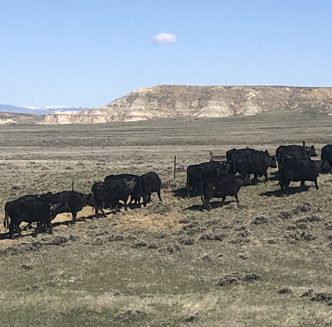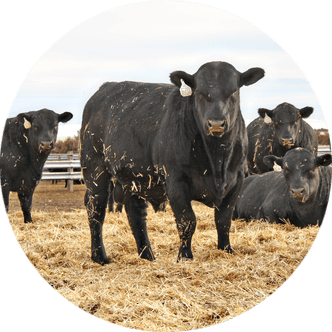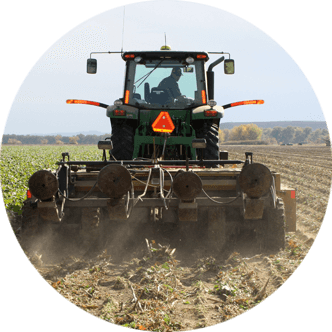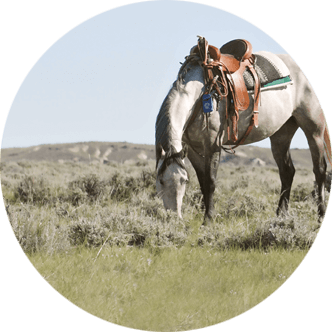U.S. Scrapie forum looks to the future
As the U.S. closes in on a scrapie-free designation, the time has come to begin conversations about where the American sheep industry goes once it crosses the seven-year finish line established by the World Organization for Animal Health.
This conversation started in earnest on April 9 as the American Sheep Industry Association (ASI) hosted the Scrapie Free in the U.S.: Moving from an Eradication to a Surveillance Program Forum during the National Institute for Animal Agriculture’s Annual Conference in Kansas City, Mo.
Attended by a variety of state and national animal health officials, Extension personnel and sheep industry representatives, the forum took a closer look at the American sheep industry’s journey toward finally being declared scrapie free.
Only three states have yet to surpass the seven-year window required for a disease-free designation – Arkansas, Indiana and Pennsylvania.
Barring any further cases, this window will close in 2028, but it doesn’t mean scrapie and the programs created to eradicate it will disappear completely. As the forum title suggests, surveillance programs will most likely still be in place moving forward.
Slaughter surveillance
Sheep Producer Matt Benz remembers the start of scrapie eradication efforts in the U.S. more than 20 years ago, so he made the 100-mile drive to Kansas City, Mo. in hopes the forum would mark the beginning of the end for a disease which drastically changed the American sheep industry and the way it tracks sheep movement around the country.
“The reason I came is because I was on the Board of Animal Health in North Dakota about 25 years ago, and the state vet said there was a U.S. Animal Health Association meeting in Little Rock, Ark.,” Benz recalled. “They were going to be talking about scrapie, so he asked if I wanted to go.”
He continued, “I went down and we were talking about scrapie, and the cattle guys said they wanted to get rid of all of the sheep in the country. Only a few of them were totally serious, but some of them were. We were talking about all of the things we needed to do with scrapie, and the question was asked, ‘How prevalent is it?’ Nobody knew the answer. So, slaughter surveillance came out of that meeting.”
And slaughter surveillance won’t be eradicated anytime soon. At least this was the prevailing thought in Kansas City, Mo.
“It’s a beginning,” Benz said of the forum. “There’s a lot of confusion, but I think everyone here is on the same page that we need to continue doing slaughter surveillance for scrapie after we’re determined to be disease free. We’re a ways away from agreeing about how it’s going to happen and who’s going to pay for it.”
Scrapie tag requirements
ASI Animal Health Co-Chair and Small Flock Producer Dr. Cindy Wolf was on hand for the forum and participated in a panel discussion which included former ASI President Cindy Siddoway of Idaho as a large flock producer; Cindy Tews of the Fresno Livestock Commission in Fresno, Calif. representing sale barns; Dr. Rosie Busch of the University of California-Davis (UC-Davis) Veterinary Medicine Extension team and UC-Davis Professor Emeritus Joan Dean Rowe as a representative of the goat industry.
One realization of the day’s forum is after all of these years of fighting scrapie, there are still sheep and goat producers who aren’t aware of the National Scrapie Eradication Program and scrapie tag requirements.
“I’m excited we had so many different representatives and stakeholders here. I thought everyone is really looking forward to what this can mean for them, even though it’s hard to visualize,” said Wolf.
“I’m excited because some of it is really tangible,” she added. “We can do more education, we can do more surveillance and we can learn what other pieces need to be put together in the next two years so we can be ready for 2028.”
Wolf has been a part of the scrapie discussion from the beginning, and she said during the panel discussion the industry was fortunate the genetic aspects of the disease are so straightforward.
“I think there are a lot of people and organizations that need to take credit for the fact we’ve come this far in our battle with scrapie,” Wolf said. “I’m thrilled, but I’m also concerned if we’ll have the leadership and commitment at the U.S. Department of Agriculture and in the industry three years from now.”
She continued, “We’re all getting older – those of us who have been involved in this from the beginning. I’m hopeful the knowledge and tools are still available through funding and staff.”
One of the unintended benefits of the program is the power of scrapie tags. While no producer enjoys having to tag animals, the tags became a powerful tool for producers – a tool which was enhanced exponentially with the development of electronic tags.
“I think when we started all of this, we didn’t realize how well received the scrapie tag could become as an ID component within a flock,” Wolf said. “We had producers show us they are using this tag for management purposes, and it still served its other purpose, which is to provide traceability.”
“There were hidden benefits none of us realized, and it works for the industry,” she reiterated. “Producers who have applied themselves through these tags have become more efficient, and their sheep have become more productive because they can keep better records. Now, they know who the star performers are in the flock.”
Therein lies the battle as scrapie efforts move forward.
The tags were never designed for identification purposes. They were designed to increase traceability in the event of a disease outbreak.
Whether they’re required or not after 2028, many producers will continue to use them as a means for improving their flocks.
Regardless of where the scrapie journey goes in years to come, the forum showed the importance of involving livestock markets in the process.
In addition to Tews, Mandy Geistweidt of Gillespie Livestock in Texas and Justin Tupper of St. Onge Livestock in South Dakota were on the agenda to talk about the role their industry plays in traceability, and it was apparent from comments by all three that many sheep producers show up at sale barns unprepared to meet the current tagging requirements.
“We are the gatekeepers to a lot of information,” Tews said during her panel discussion, noting most markets can help producers meet tagging requirements but charge extra for a service which can be a real strain on their limited labor force.
“I’m constantly reminded of how much we need to have good information available to producers, and we have to get more creative about how we put information out to them,” said Wolf.
While scrapie materials have been made available to sale barns in the past, the program ran into issues with keeping information current and assuring it was distributed to producers.
“We need to reach all of the industry, not just the people who are coming to our association meetings,” Wolf added.
Discussions on the future of the scrapie program and where it heads from here will continue in the months – and years – to come.
But with estimates scrapie costs American sheep producers between $10 and $20 million a year in lost exports and increased production costs, there’s no doubt the industry can’t afford to take a wrong turn this close to the final destination.
ASI is the national organization representing the interests of sheep producers located throughout the U.S. From east to west, pasture-based flocks to range operations, ASI works to represent the interests of all producers. This article was originally published in the May edition of ASI’s Sheep Industry News.





